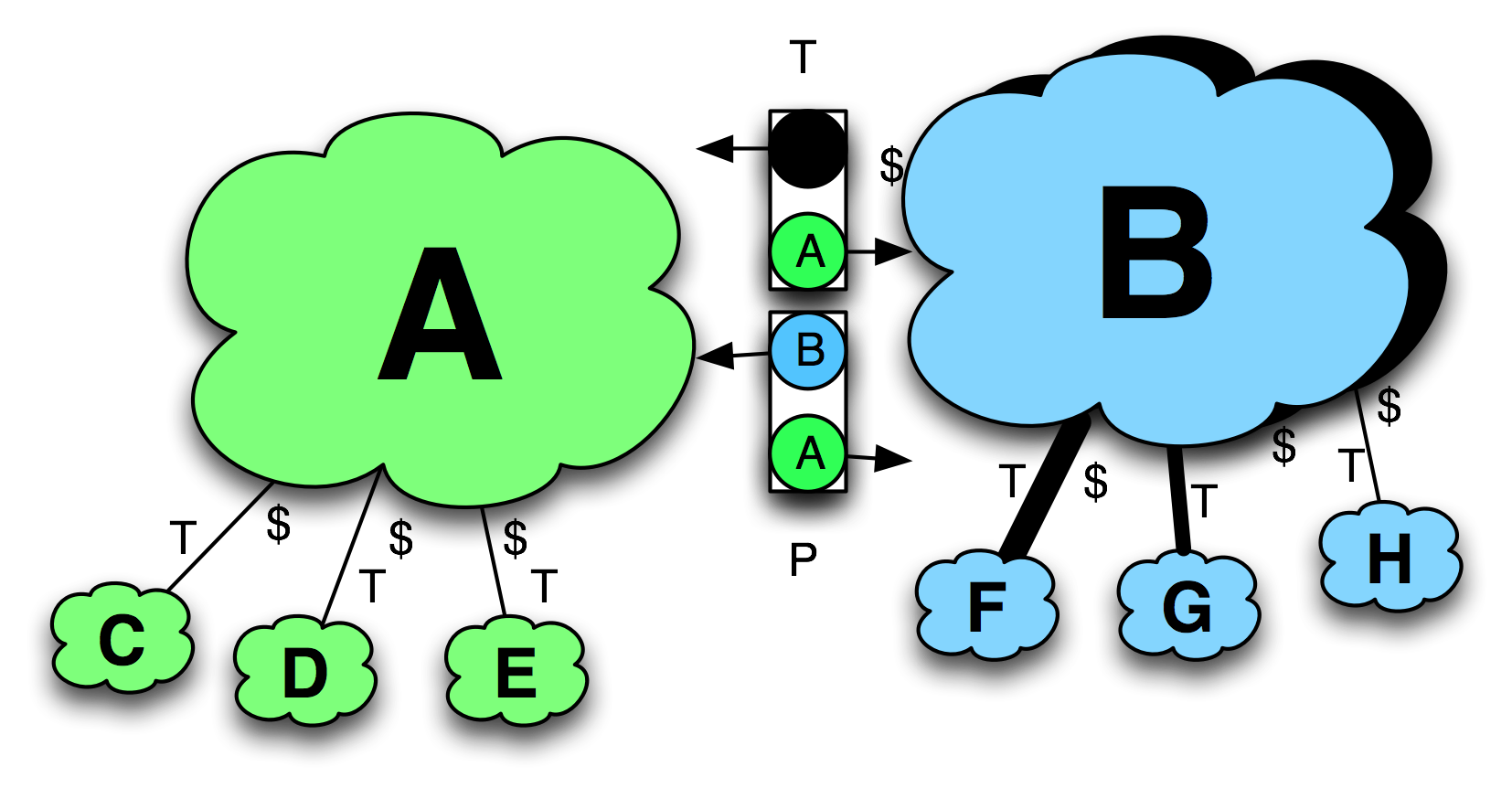Tactic 4. Bundle Internet Transit with Peering
James Rice (BBC Internet at the time) shared with me the Bundle Internet Transit with Peering tactic, which is apparently more common in Europe and Japan than in the U.S. This approach uses an internal advocate to advance a transit purchase bundled with free on-net traffic exchange. The internal advocate (the target salesperson) is used here to internally advocate these interconnections, and at the end of a sales quarter, many things become possible.
This interconnect (shown pictorially in Figure 11-14) often utilizes separate routers and/or interface cards and separate transport circuits to separate the customer-to-customer traffic from the transit traffic to make the accounting easier. The initiator ISP pays for traffic exchanged on the “transit” interface card and doesn’t pay for traffic exchanged on the “peering” interface card.

Figure 11-14. Free on-net access with Internet transit sale.
The beauty of this approach is that the internal advocate handles all internal hurdles to peering, the peering can be executed immediately, and using separate interface cards makes it easy to implement.
The difficulty with this approach is that some ISPs do not have the internal mechanisms to support this dual interconnection, and might rationally prefer a simple transit relationship. Some claim that this dual relationship has been tried but is ultimately subject to being gamed, with the upstream forcing traffic along the revenue-producing path rather than the intended “free-peering” path.

